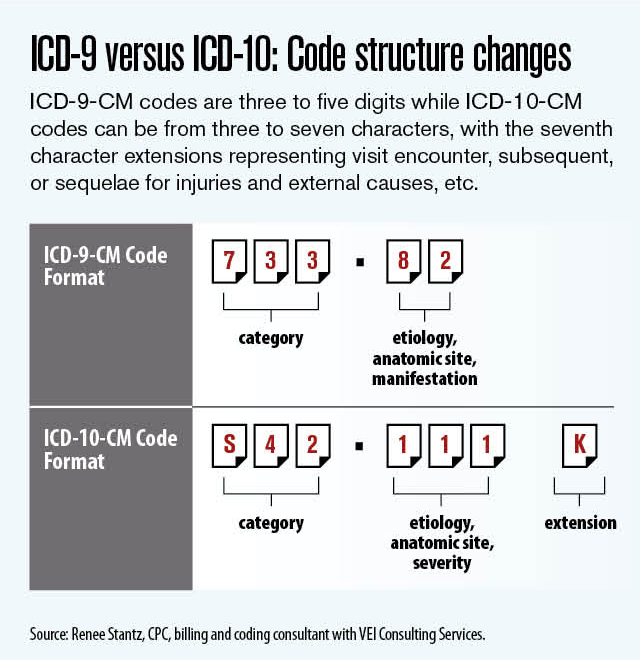
CHALLENGES IN ICD-10 IMPLEMENTATION
As everyone with a medical practice sees, there's a big thing coming in the world of medical coding. The revision of codes in ICD-9 has thrown the out-dated terminology and has brought the encroachment in the medical field with the standardize ICD-10.This big change is allowing the physicians to evolve with specificity, ability and accuracy in medical diagnosis.
Within no time ICD 10 is in market and since the phase ICD implementation is affecting almost every sections of medical billing industry. This year accompanies with the first penalty year for the Physician Quality Reporting System (PQRS), Value-Based Modifier Program (VBMP), and EHR Incentive Program. It's also the final year for PQRS incentive payments. Talking about ICD-10, the biggest accomplishment of the year, ICD-10 favors the medical team with clear and specific clinic data, disease code classification and information relevant; but has its implementation and usage bringing to challenges and drifts. Few challenges hidden in its application are:
1. Plan-Up Act : The root challenge one has to confront with is the conversion of ICD-9 (previously in use) to the upcoming ICD-10. There are approximately 68,000 ICD-10 codes, compared to 14,000 ICD-9 codes. The complete advancement and the transition is not straightforward and contains hidden mapping and planning shortcomings.
2. Training: The trainees and the practitioners need now to develop and equip with the latest ICD-10 program. It’s essential for the physicians to familiarize with the new code maze and learn according to one’s perspective and job handled. 24/7 Medical Billing Services with six hours of specialty wise sessions to the physicians & medical assistants gets you efficiently trained in these codes, from our expertise.
3. Payment and Repayment: After the implementation of ICD-10 the payment trend changed. Reimbursement can be influenced by the DRG alters. New DRG group methodologies will be needed to translate the new codes into DRGs for payment and thus the old payment strategies will be adjusted and re-created.
4. Money-Oriented: ICD-10 unlike ICD-9 is expensive and its complexity level goes up. According to the economic impact statement, the transition is figured around $1.64 billion over 15 years, with more than 43% of that coming from the cost of upgrading IT systems. That cost is spread across multiple participants—government ($315 million), payers ($164 million), providers ($137 million) and software developers ($96 million). Its all implementation, transition, documentation and further application is quite time- consuming and manifold.
5. Communication error: The different departments and the constituencies need to be aware and responsive towards the ICD-10. For this it ought to be confirmed that the executives or the supervisors are acquainted with the fact and are properly fortified. They must coordinate and collaborate with the other project team and the practitioners.
All these hurdles and challenges of ICD-10 either for hospitals or payers or the testing issue don’t sum up that this program is a "no-good" work. But when carried with extra knowledge and plan these can be swept.


.png)